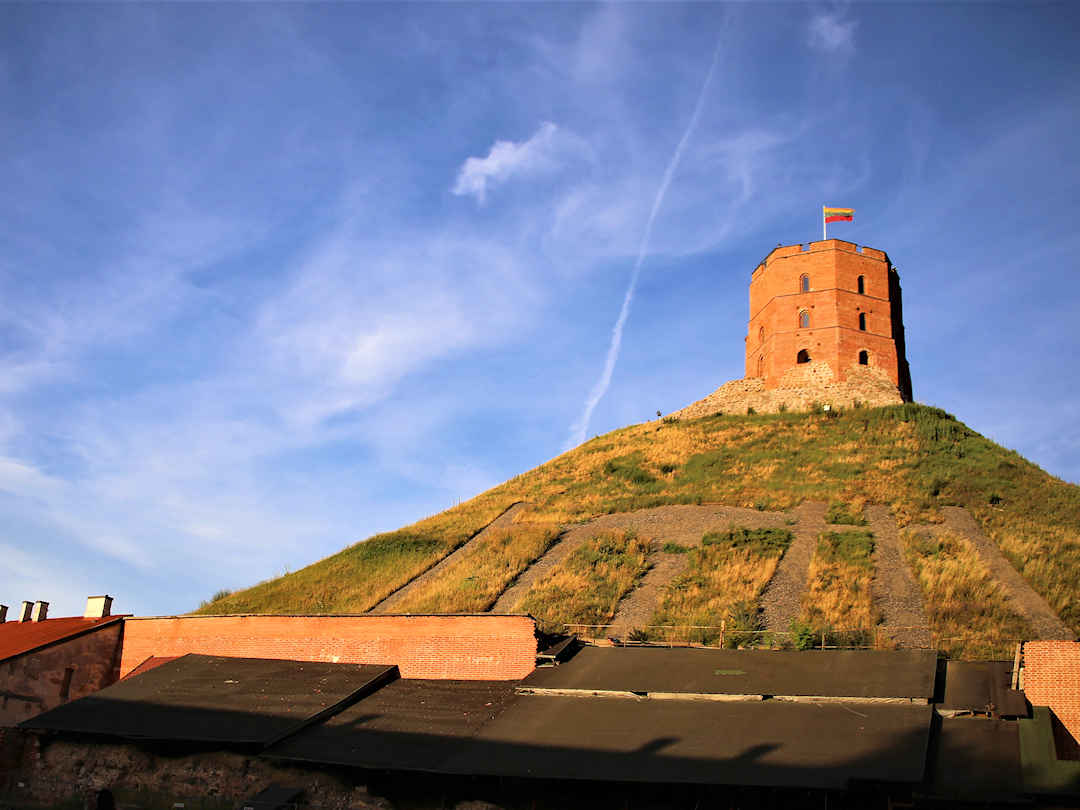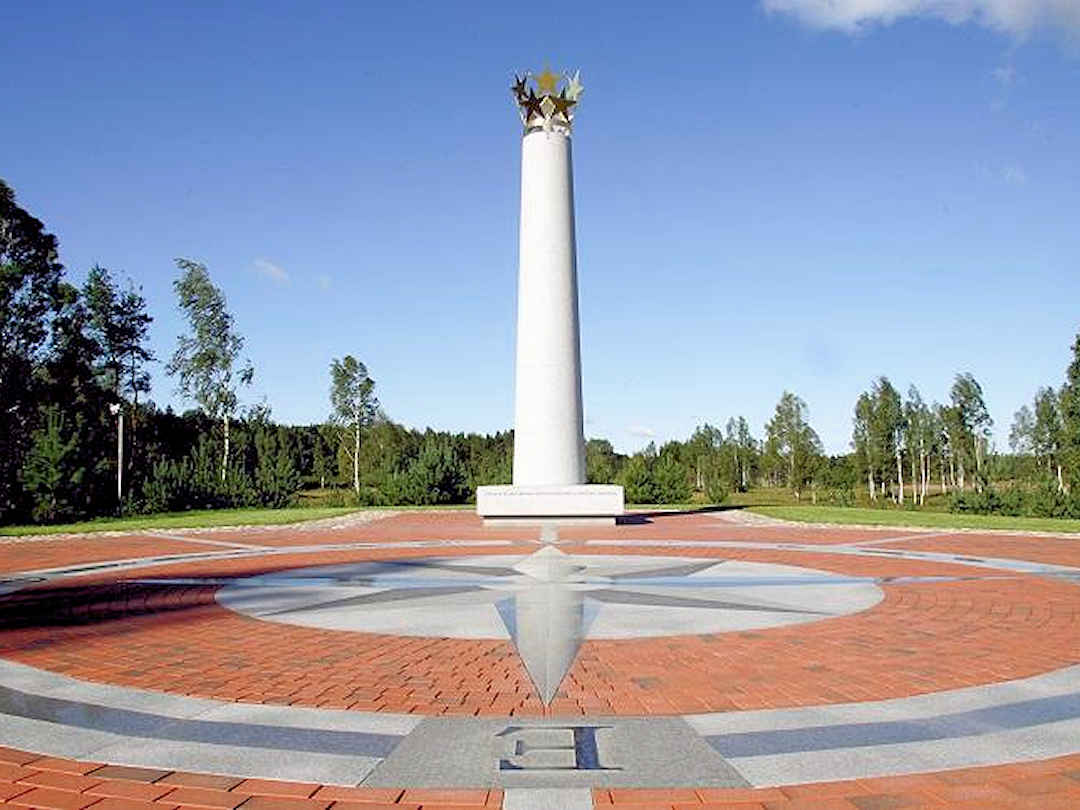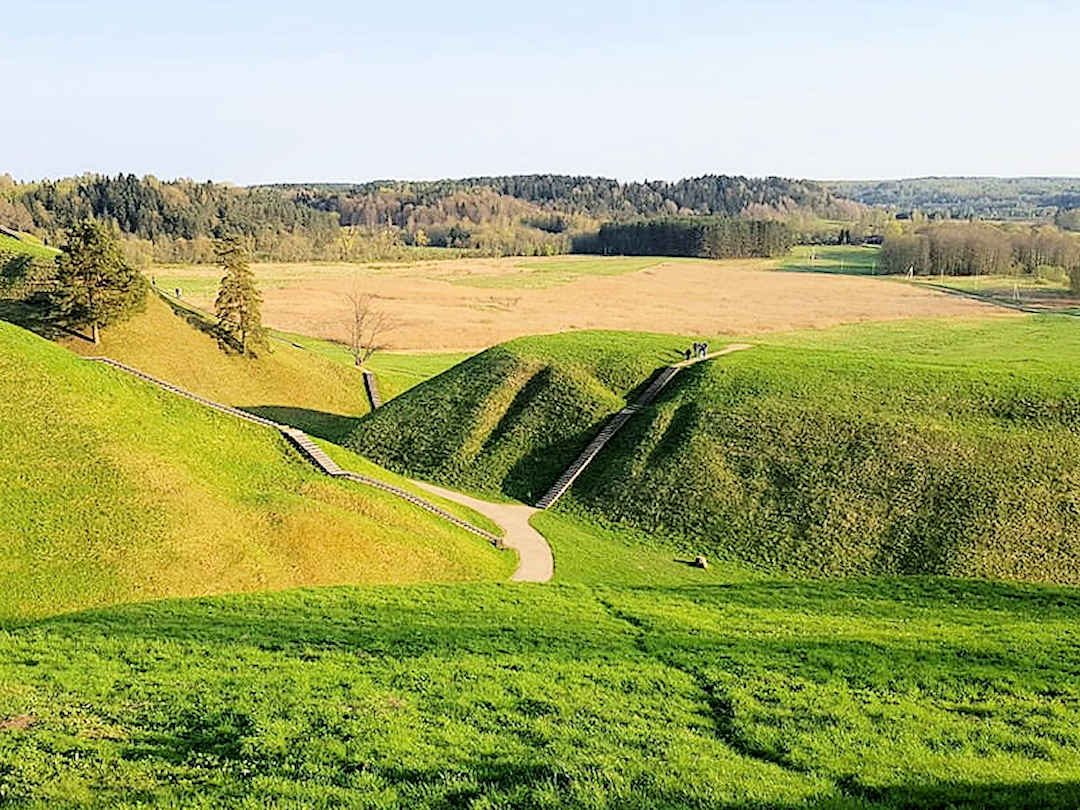Are you planning to visit Lithuania and wonder what there is to see and do (in a week)? Whether you only have time for a flying visit or three weeks to explore all three Baltic countries we’ve got THE itinerary for you.
Most people don’t know much about Lithuania, the southernmost of the three states, commonly known as The Baltics. Lithuania actually once was the largest country in Europe. No joke. In the 14th and 15th centuries, the Grand Duchy of Lithuania reached from the shores of the Baltic all the way to the Black Sea. Lithuania was also the first of the Baltic states to regain independence after 40+ years of Soviet occupation, on 11 March 1990. Naturally, Lithuania has historic sites galore.
Download your Sustainable Travel Checklist and show the world you care
As travellers, we should all be aware of our travel behaviour and its environmental, economic and social impact; and make conscious decisions about it. Too often, we hear negative stories in the media about tourists behaving badly.
Here is your chance to tick some boxes and check out what it really takes to travel with a sustainable mindset.
Three reasons why you should visit Lithuania
- You’ll probably know: it’s super easy to get here from anywhere in Europe. Lithuania boasts no less than three international airports: in the capital Vilnius, the country’s second-largest city Kaunas and in Palanga on the Baltic coast.
- Lithuania is right in the centre of Europe. It’s true. Scientists have determined that the geographical centre of the continent is approximately 30 kilometres north of Vilnius.
- If you’re into history and the great outdoors as much as quirky things (for example, a country within a country or a pilgrimage site with thousands of crosses in the middle of nowhere) Lithuania ticks all the boxes.
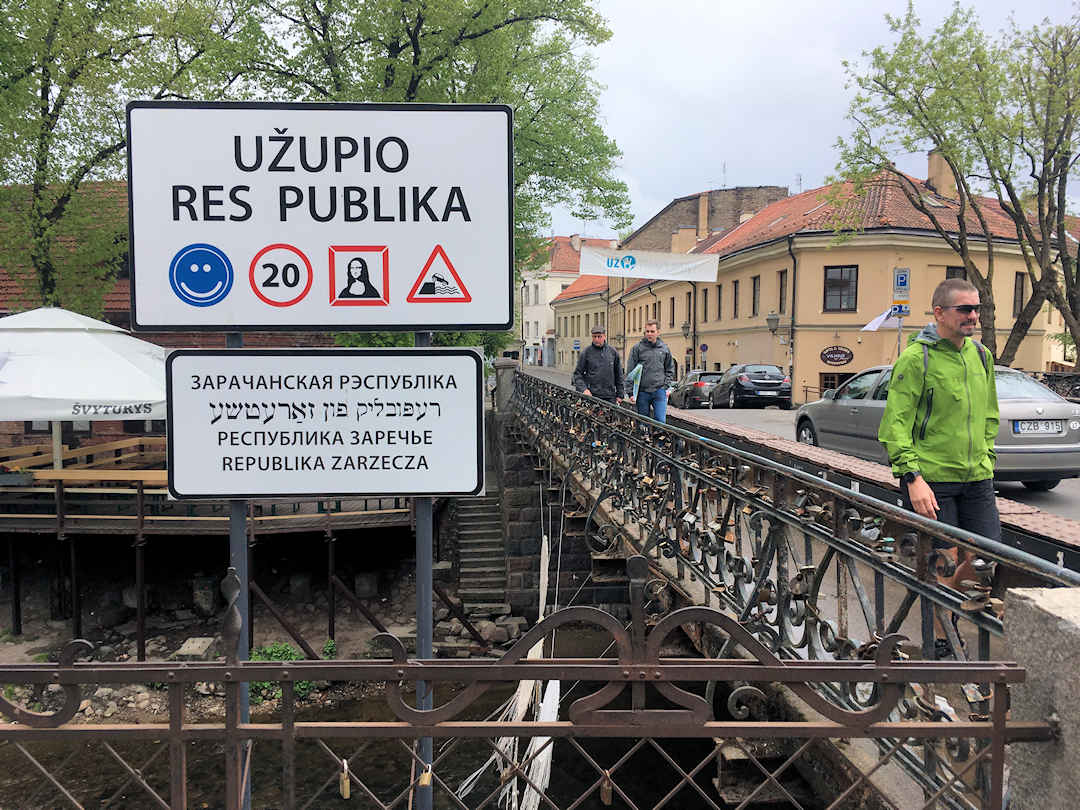
The self-proclaimed “Republic” of Užupis is Vilnius' Bohemian and artistic district
Map of Accommodation, Points of Interest, Eateries and Transport
Below is a map of the recommended accommodation, points of interest, eateries and transport terminals/stops mentioned in this article.
Our itinerary assumes that you fly into Vilnius (IATA Code: VNO) and, after your week in Lithuania, continue your travels to Latvia and Estonia overland.
If you don’t have time to visit Latvia, your closest airport from Šiauliai is still the Latvian capital Riga (IATA Code: RIX, 130 kilometres/ approximately 2 hours north of Siauliai). Very conveniently, most buses from Siauliai stop at Riga airport before they head to the main bus terminal in the city centre.
Alternatively, you can return home from the following international airports in Lithuania:
- Kaunas (IATA Code: KUN) – 140 kilometres / approximately 3.5 hours south of Siauliai
- Palanga (IATA Code: PLQ) – 150 kilometres / approximately 4 hours west of Siauliai
- Vilnius – 210 kilometres / approximately 4-5 hours southeast of Siauliai.
To organise your mode of transport between the three stops (and your day trips from Vilnius and Kaunas) check out the transport section in our Baltics post.
But first, let’s talk about what there is to see and do…
How much does it cost to explore the Baltics?
Visiting the Baltic countries cost us on average EUR45.17/USD50.54 per person per day. Check out our individual country costs here:
Highlights of Vilnius (and surrounds)
Day 1
With two full days in the Lithuanian capital, we recommend starting your day with a free walking tour. The tour will introduce you to Vilnius’ Old Town (going past the University and through the streets of the former Jewish Ghetto) and take you through the bohemian self-proclaimed Republic of Užupis. It starts at 1030h from the Gediminas statue at Cathedral Square and takes approximately 2.5 hours.
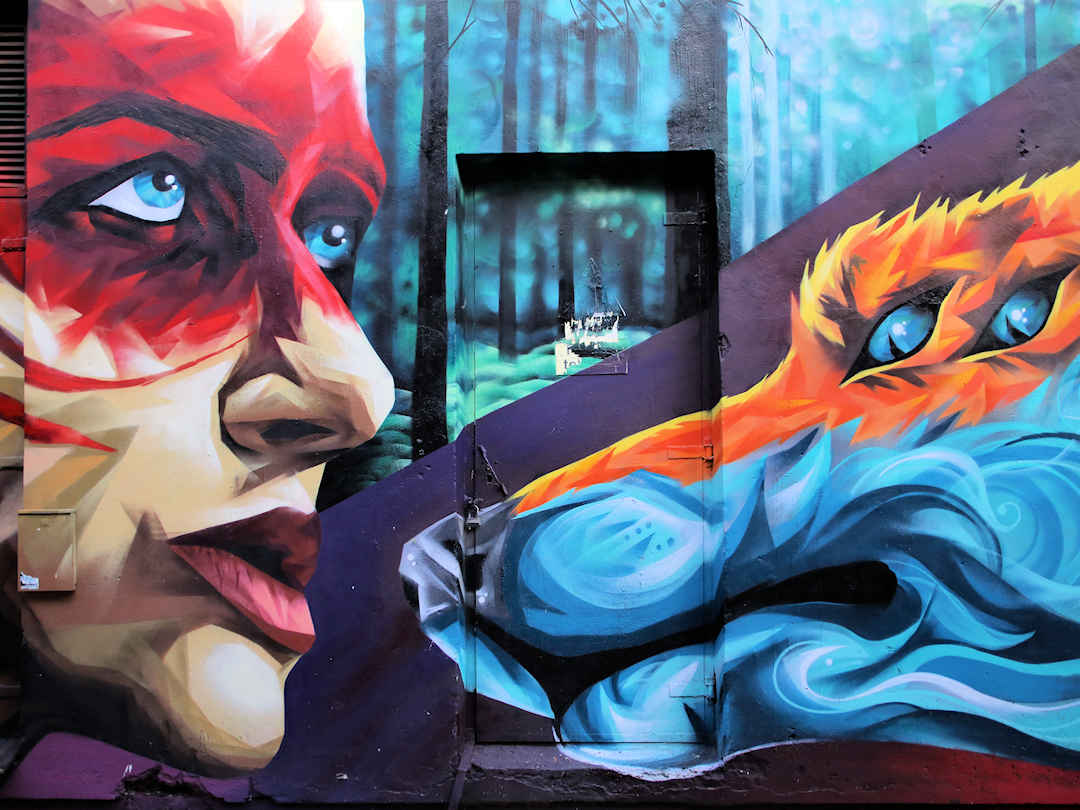
If street art is your thing you'll love Vilnius | Photo by Kate Sobol
This was hands down the most interesting museum we visited in Lithuania. The museum is located in the former KGB Headquarters. People who didn’t agree with the regime weren’t just subjected to torture (you can look into a cell that was padded to muffle the screams). Over 700 of them were killed right here in the basement – the execution chamber was especially haunting – and buried in mass graves in what is now Tuskulenai Peace Park.
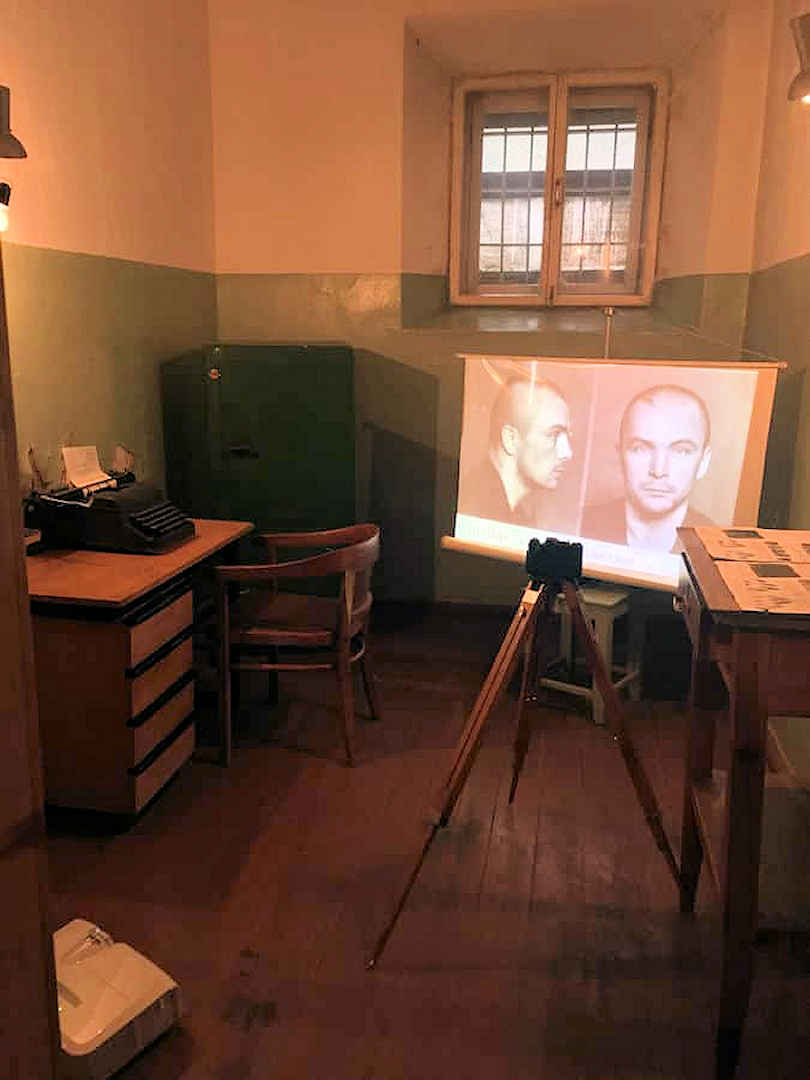
The Museum of Occupations and Freedom Fights - gruesome but our favourite museum in Vilnius
To finish your first day in Vilnius on a more positive note, head to Gediminas Castle Tower to learn more about the Baltic Way.
The views over Vilnius from Gediminas Tower are already pretty cool but for a different perspective, climb the Bell Tower of the Cathedral and/or the Bell Tower of St John’s Church.
If you’re into Soviet-era memorabilia, pop by the Flea Market store in the Old Town (Pilies Gatve 6) on your way.
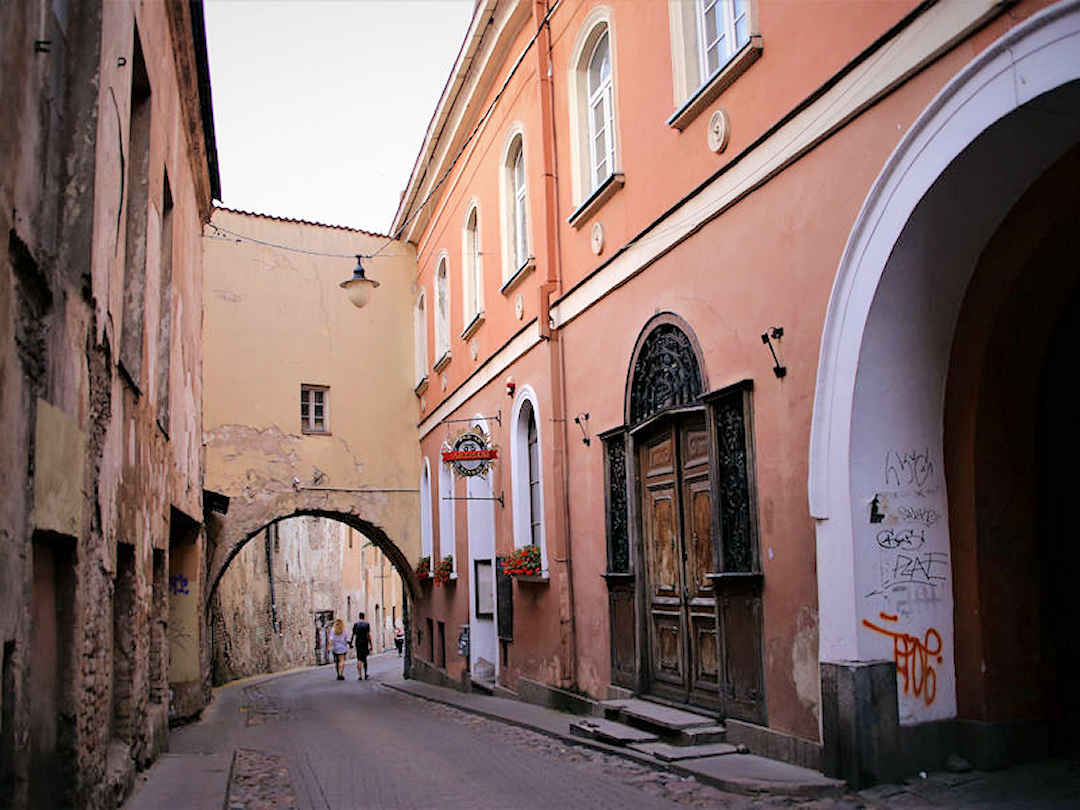
The free walking tour through Vilnius' Old Town includes the Jewish Quarter | Image courtesy of Kate Sobol
Day 2
On your second day, we suggest you stock up on some fresh local produce at Hales Market (opens at 0700h, closed on Mondays) and head out of town. While you can visit all the below destinations by public transport, we recommend you hire a car for the day, as this enables you to drive one big loop (rather than having to return to Vilnius in between).
First up, you drive approximately 32 kilometres / approximately 45 minutes north. The Geographical Centre Of Europe is located just outside the village of Purnuškės (if you travel by bus take the bus towards Biržai and get off at Radžiuliai, from there it’s only a short walk to the site).
While not much more than a memorial with marker flags and a visitor centre, if you’ve visited the Equator near Quito in Ecuador, the Center of Europe is pretty cool too.
Next, you head 40 kilometres / approximately 45 minutes west. Kernavė was the medieval capital of Lithuania, and like Vilnius’ old town, it is a UNESCO world heritage site. Don’t expect well-preserved medieval architecture though. Given ancient Kernavė was built from wood, all that’s left are the hills on which the wooden fortresses once stood. But there is an interactive museum that brings the city’s story to life. If you travel by bus, you need to return from Radžiuliai to Vilnius and take the bus from there to Kernavė.
If you’ve still got time/energy, you can head to Trakai (30 kilometres / approximately 45 minutes drive south of Kernavė). We didn’t visit the castle as we’d heard that it is too expensive for what it is. But the island and surrounding area form a National Park and are worth a visit.
While you can visit Trakai by bus/train, if you come from Kernavė, you’ll have to travel (again) via Vilnius. Alternatively, you can stop in Trakai on your way to Kaunas.
Food and Drinks in Lithuania
- To try more Lithuanian cuisine at reasonable prices, head to one of the Etno Dvaras outlets in Vilnius or to Bernelių užeiga in Kaunas. Unfortunately, we didn’t experience the most efficient or friendly service there (but it might be different for you).
- For a Soviet-era bistro experience and cheap but tasty food, pop by Sultiniai in Vilnius (Jogailos Gatve 8) or Prie Pasto in Kaunas (Laisvės Aleja 102 – enter through E. Ožeškienės Gatve 10).
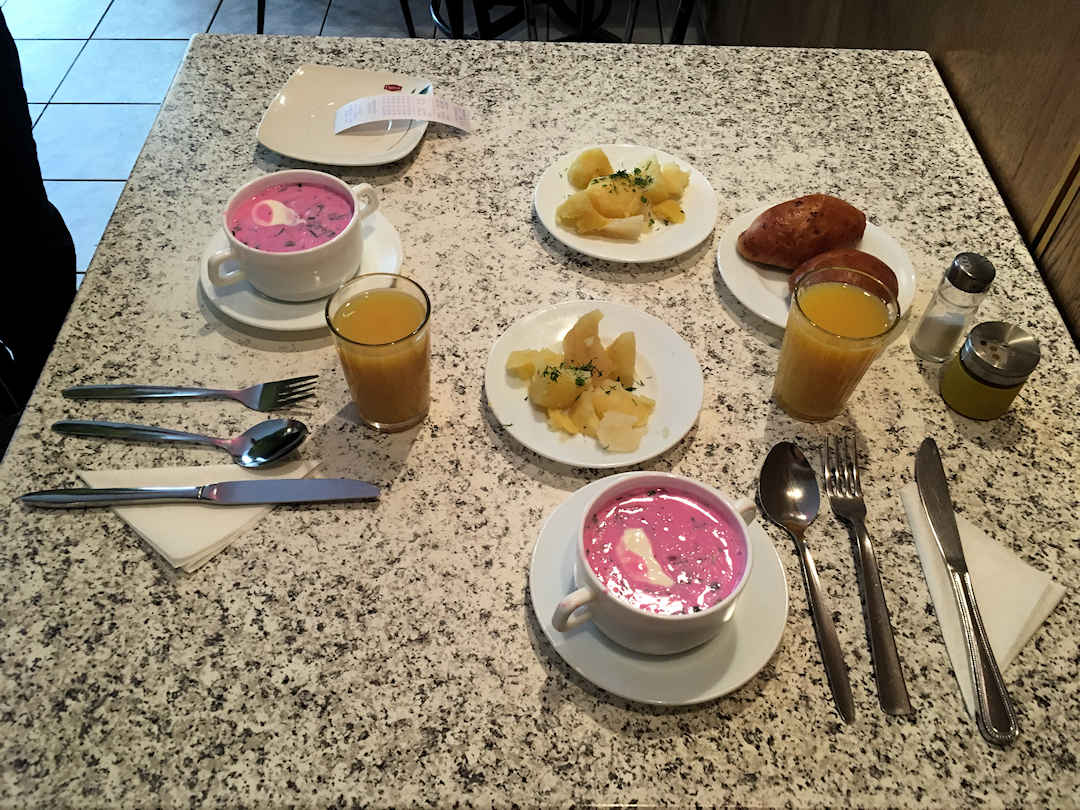
For a Soviet-era bistro experience and cheap but tasty food, head to Sultiniai in Vilnius
Highlights of Kaunas (and surrounds)
A bit rougher around the edges, Kaunas (Lithuania’s second largest city) often gets overlooked in favour of the capital or Klaipeda on the Baltic Coast. We really liked it though. Maybe because its Old Town is smaller but equally beautiful as Vilnius’. Maybe because its colourful trolley buses brighten up the streets or maybe because of its abundance of street art and wooden houses.
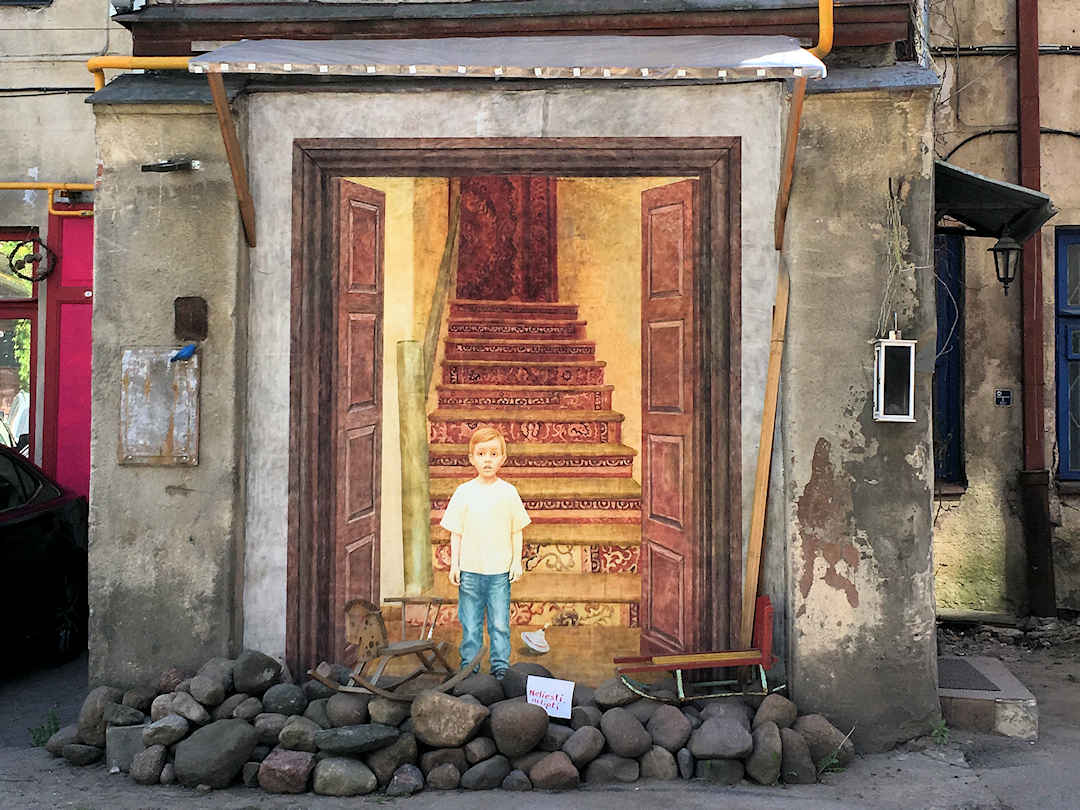
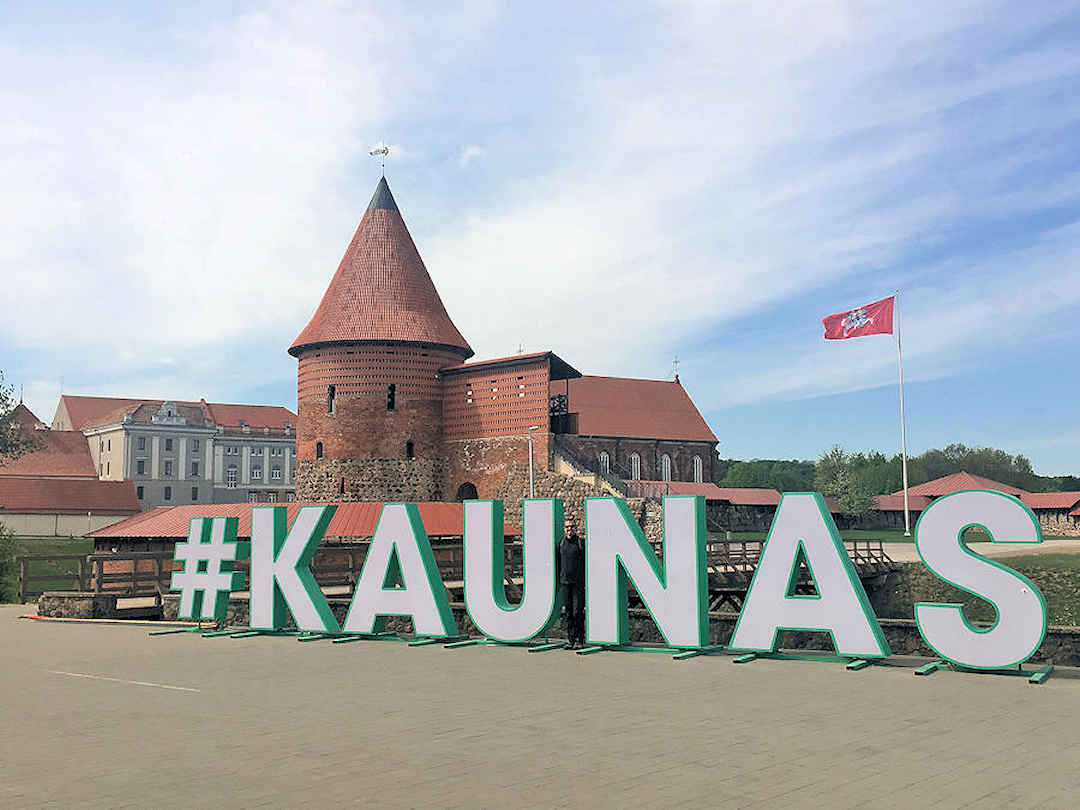
Day 1
As with Vilnius, we recommend spending your first day in Kaunas, exploring the city on foot. This time with a self-guided walking tour. We combined ours with a tour of Kaunas’ street art.
Make sure you visit Kaunas Castle and stop by the House of Perkūnas (it’s gorgeous on the outside, but there isn’t really anything inside worth the entry fee). To finish off your morning, and to learn more about Kaunas’ time as the capital, visit the interactive museum in the Historical Presidential Palace.
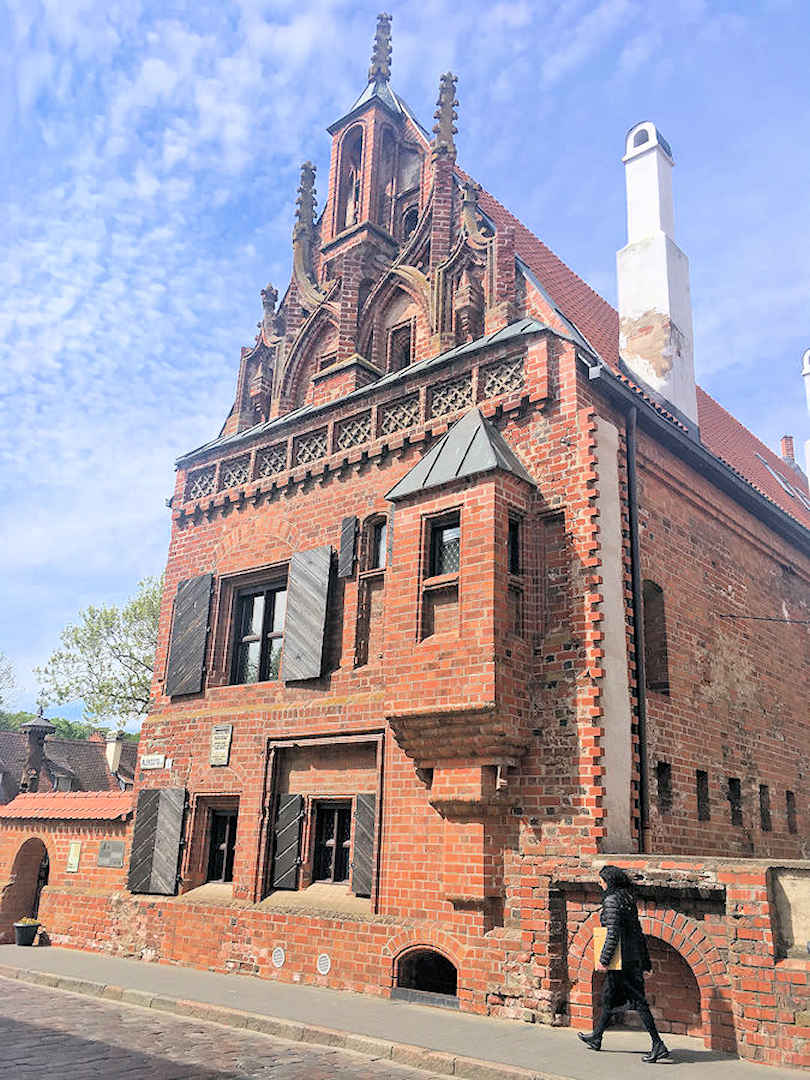
Built in the 15th century, the House of Perkūnas is one of the oldest houses in Kaunas
After lunch, visit the only museum in the world dedicated to the devil. Yep, that’s right. What started as a collection of gifts a famous Lithuanian artist received, is now the largest of its kind in the world. Unfortunately as of June 2023, Žmuidzinavičius Museum, also known as the Devil Museum is temporarily closed.
From the museum, head up the small hill (on foot or via the super short cable car ride) to Christ’s Resurrection Church for 360-degree views over the city from its terrace (as well as songs and organ music if your visit coincides with a service).
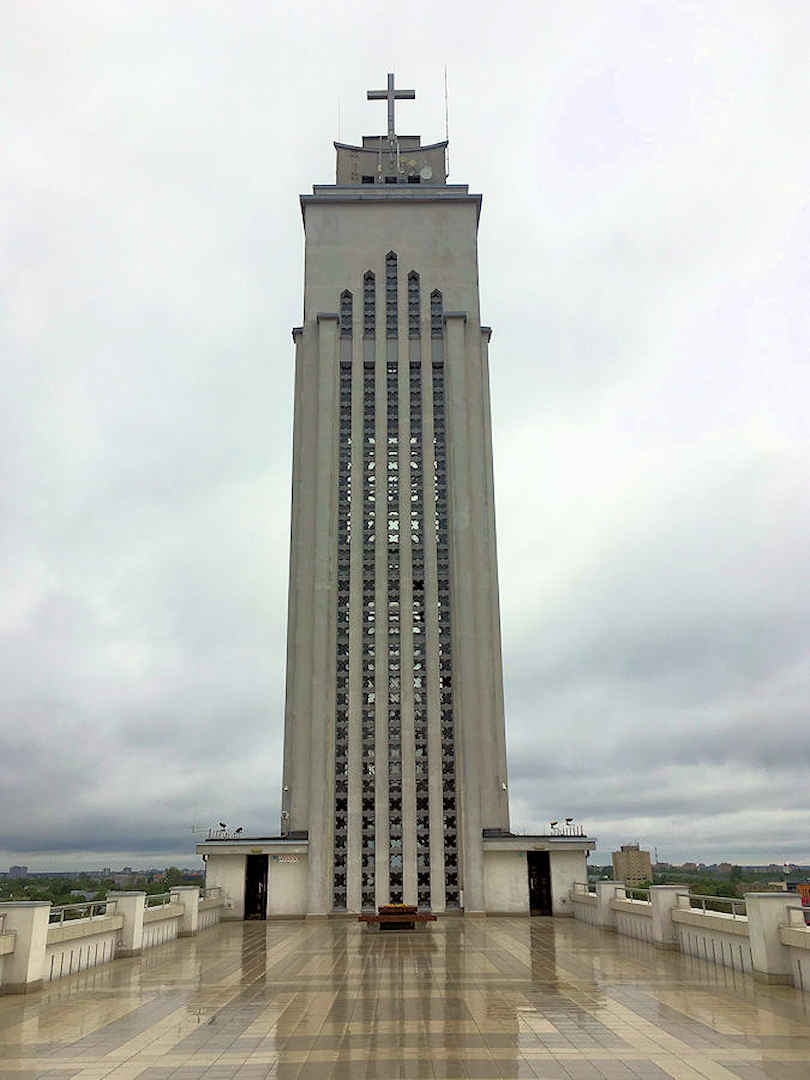
The terrace roof of Christ's Resurrection Church offers 360 degree views over Kaunas - if the weather is nice
If you’re here between September and June, try and time your visit with a home game of Žalgiris Kaunas, Lithuania’s best basketball team. Tickets at Žalgiris Arena can be booked online.
Day 2
In the morning, we recommend a visit to the Memorial Complex of the Ninth Fort. Originally part of the fortification system surrounding Kaunas when it was located at the Western border of Tsarist Russia, the Ninth Fort was only used as a military installation until the end of WWI. During Kaunas’ time as Lithuania’s capital, it was transformed into a hard labour prison. And during the first period of Soviet occupation between 1940 and 1944, prisoners transferred through the fort on their way to the Labour Camps in Siberia. During the Nazi occupation of Lithuania, as many as 50,000 people were killed here.
A well-curated museum provides in-depth information on all four distinct periods in the history of the fort. For more information check out this excellent post about the Ninth Fort Memorial Complex.
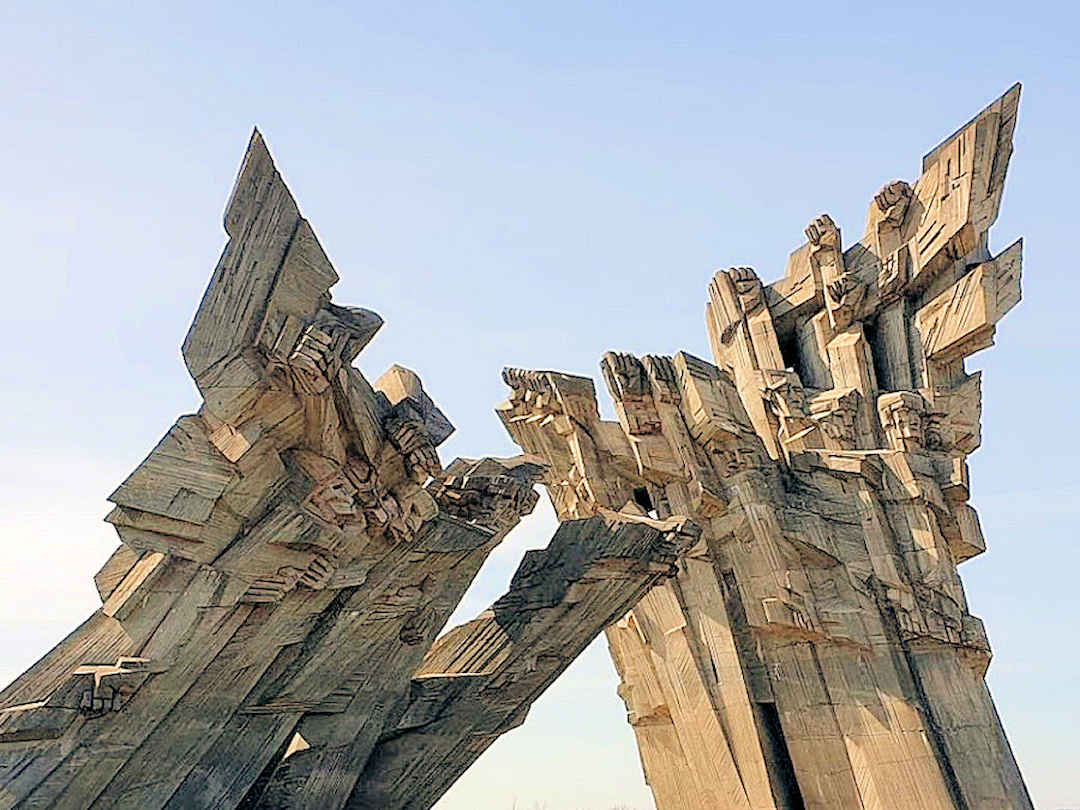
Originally part of the fortification system surrounding Kaunas, 50,000 people were killed at the Ninth Fort during the Nazi occupation
To balance the morning experience, we suggest you spend your afternoon visiting the Spa Town of Birštonas. Birštonas is easily reachable from Kaunas (50 kilometres/ approximately 45 minutes south) by bus.
Walk through its Central Park and along the Neman River, enjoy the water sounds and salty air at the Druskupis Mineral Water Evaporation Tower or book a spa treatment. If you decide to head here for a spa treatment, you could even shorten your stay in Kaunas to two days (and stay one night in Birštonas instead).
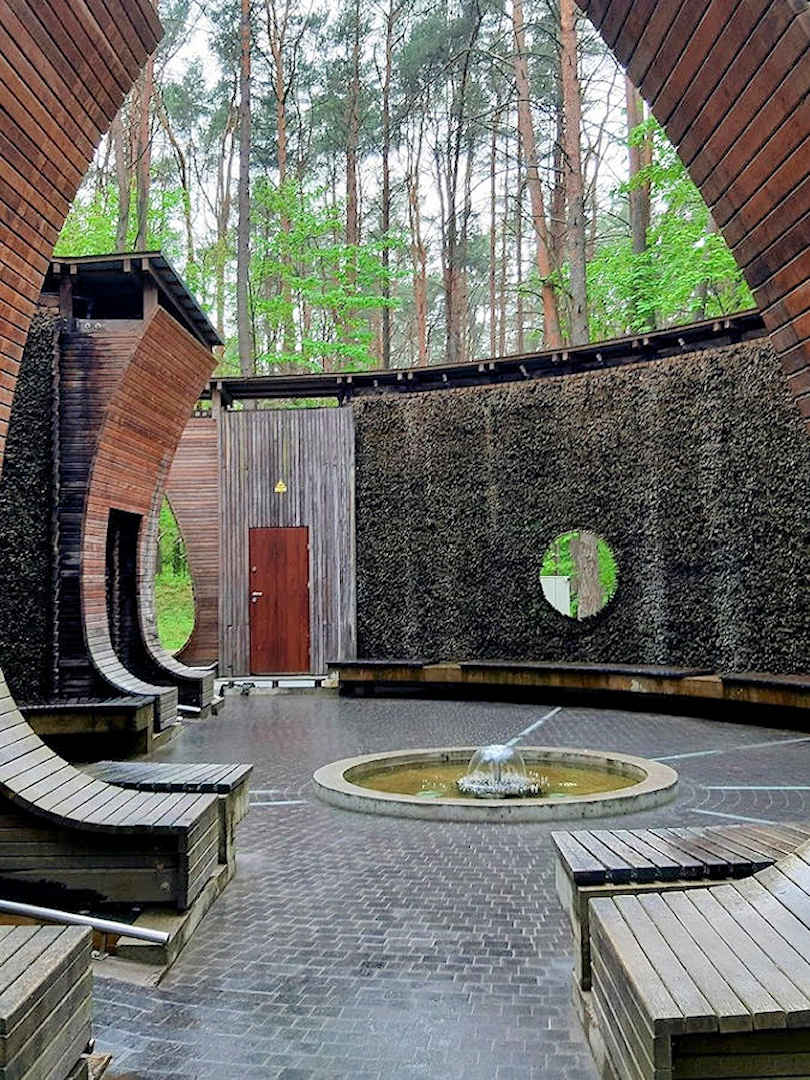
For an afternoon of reflection and rejuvenation head to the spa town of Birštonas
Recommended movies to provide inspiration for your next trip
If you're looking for some travel inspiration, why not turn to the big screen? Movies have the power to transport us to different places, sparking our wanderlust and making us dream of new adventures. And with 80+ films to choose from, covering classics and hidden gems all around the world, you will be planning your next adventure in no time.
Šiauliai and the Hill of Crosses
We first heard about the Hill of Crosses from Atlas Obscura and were intrigued. Having completed our first pilgrimage to Santiago de Compostela in Spain, we wanted to experience the Hill of Crosses by ourselves.
While in the middle of nowhere, 12 kilometres north of the city of Siauliai, the pilgrimage site is not difficult to reach by public transport. Buses leave from Siauliai’s bus station, and the timetable published online seems to be (kept) up to date.
Once you get off the bus at Domantai, you walk for two kilometres along a dead flat road. About halfway in, you can make out the hill in the distance on the right (and a parking lot with tourist buses on the left). With the four-kilometre return walk and spending 45 to 60 minutes at the Hill of Crosses, consider about 90 minutes between the bus times.
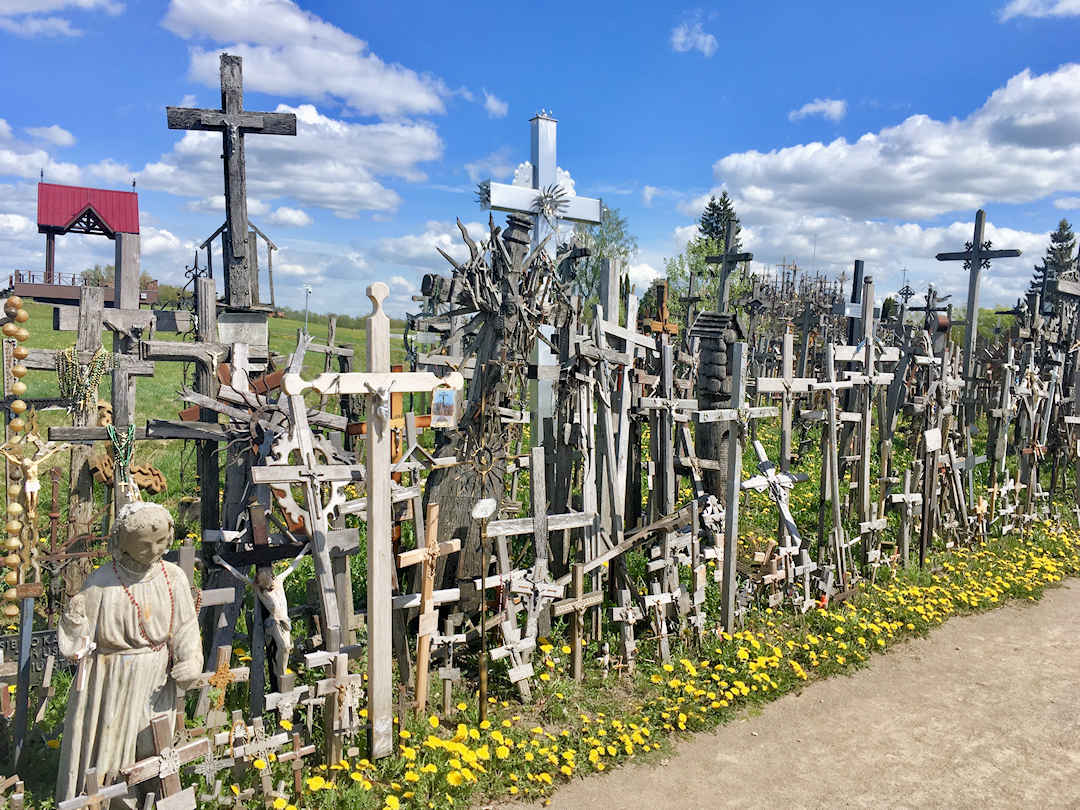
Visiting the Hill of Crosses north of Šiauliai is free but you need public transport (or a car) to get there
As for the experience: There are thousands and thousands of crosses of all shapes and sizes. Some strongly anchored in the ground, some leaning or hanging on others. A forest of weathered wooden crosses interspersed by new wooden ones, shiny (and rusty) metal ones…
My favourite was a small cross with Noah’s Ark painted on it. Innocent like a child, it stood out among all the greyness surrounding it.
I’m glad I went, and I could have easily stayed longer. Paul felt a bit sad after visiting the site. I just felt a sense of total peace.
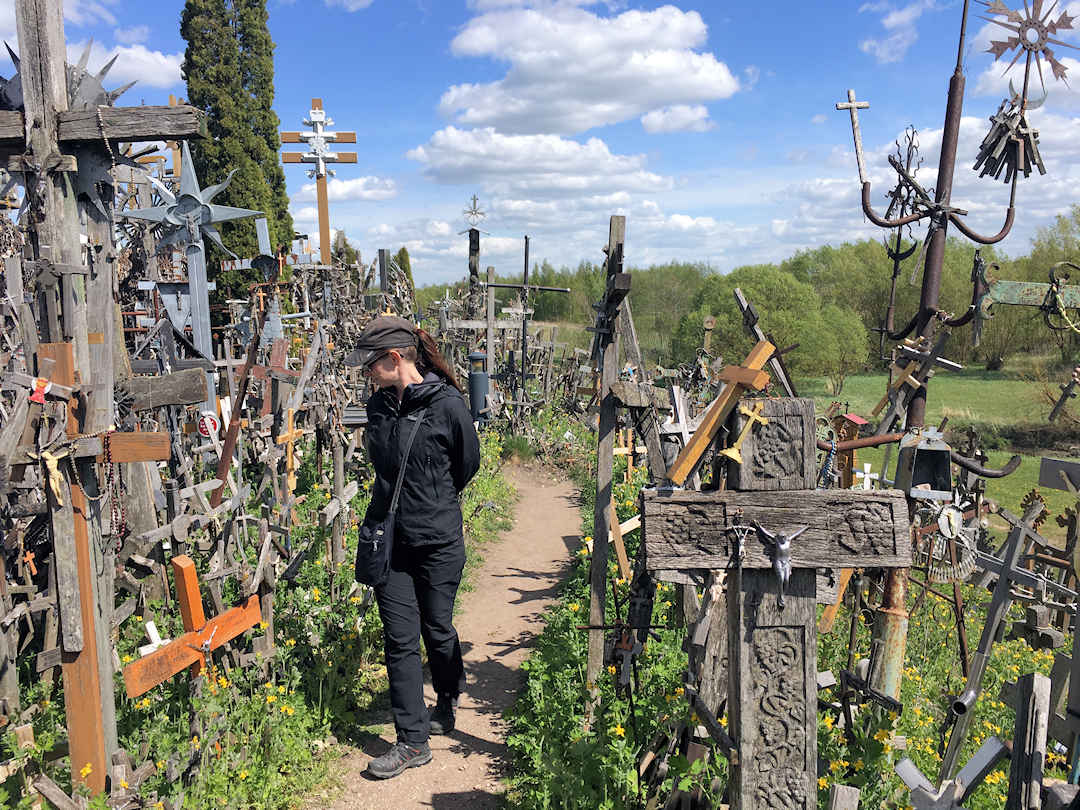
Walking on the path at Hill of Crosses allowed us to reflect on humanity
Siauliai itself is less exciting. The Cathedral of St Peter and St Paul, about 10 minute’s walk north of the bus station, is worth a visit. The city also has a random collection of museums, dedicated to photography, bicycles and chocolate (Siauliai had factories making both), and even angels. So, if you’ve got some spare time, take your pick.
Alternatively, if there are afternoon buses to Riga when you visit, you could head there earlier (and skip the night in Siauliai).
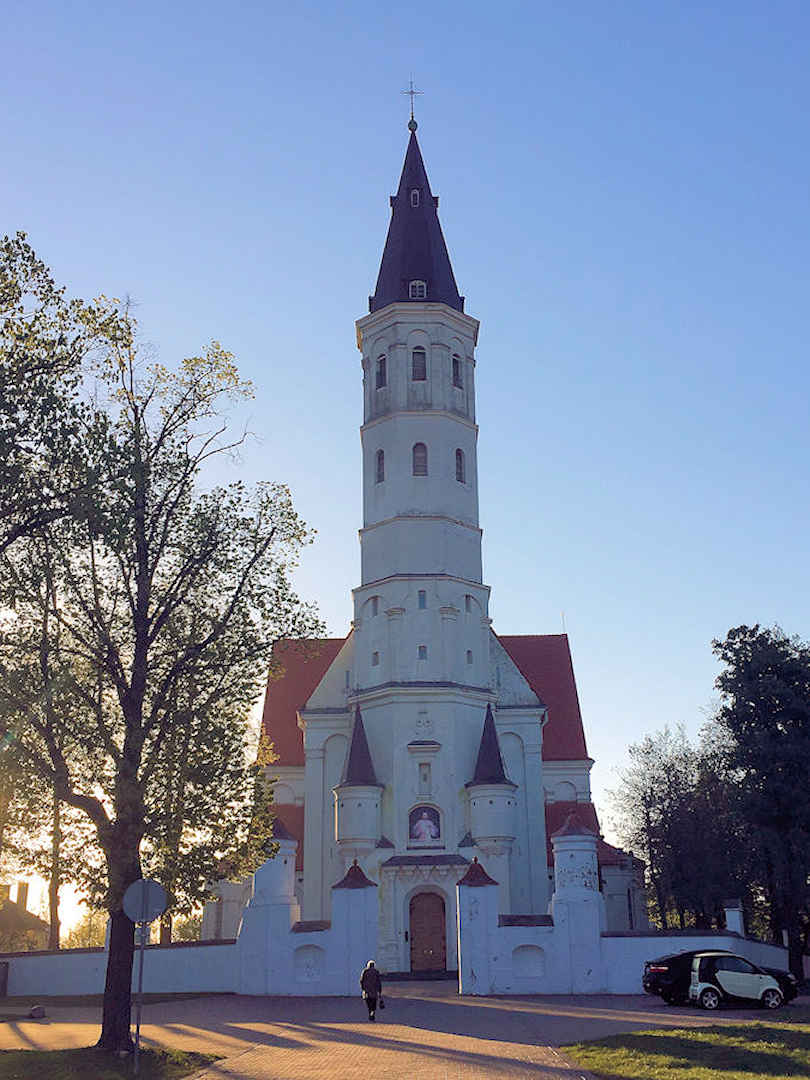
If you have spare time in Šiauliai you may want to visit the Cathedral of St Peter and St Paul and/or one of the city's quirky museums
Have you been to Lithuania? What other things to see and do would you recommend?
I wrote this Lithuania travel guide based on our own experience. If you have been to Lithuania as well and you have something to add, please feel free to contact me. If you liked my Lithuania tips and found them helpful, I would appreciate if you could share them with your friends and family via the Share buttons below. Even better, link to the page from your personal blog or social media platforms.

